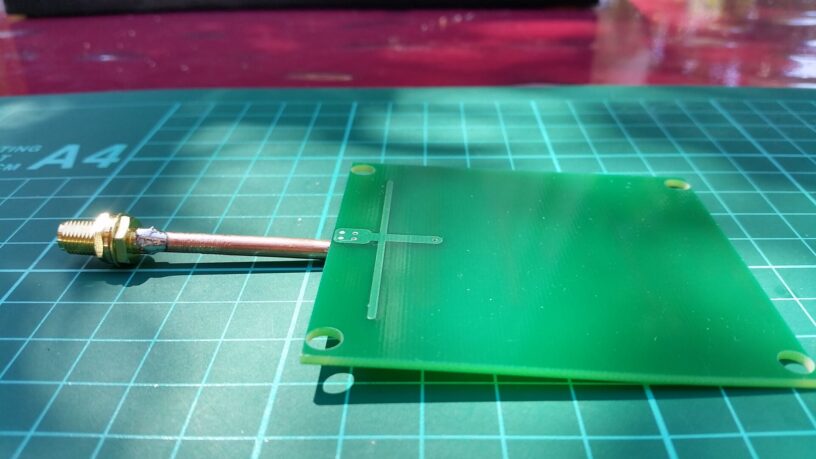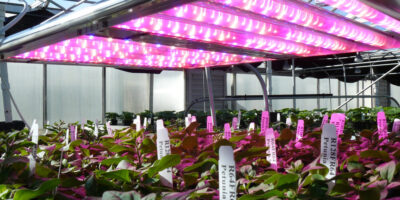The Dielectric Resonator Antenna Market industry is projected to grow from significant value by 2032, exhibiting a compound annual growth rate (CAGR) of 5.00% during the forecast period (2024 – 2033).
The Dielectric Resonator Antenna (DRA) market represents a niche but rapidly growing segment within the broader antenna technology landscape. DRAs are gaining traction due to their unique properties, such as high radiation efficiency, compact size, and broad bandwidth capabilities, which make them suitable for various applications, including telecommunications, military, automotive, and medical devices. This comprehensive overview will explore the market’s historical development, current analysis, growth opportunities, demand drivers, end-user requirements, and reasons to purchase a market report.
Historical Development
Early Research and Conceptualization
The concept of dielectric resonators (DR) dates back to the 1930s, initially used in microwave circuits due to their high Q-factor and temperature stability. However, it wasn’t until the late 1970s and early 1980s that researchers began exploring their potential as antennas. The pioneering work on DRAs demonstrated that they could achieve high radiation efficiency and wide bandwidth, sparking interest in their practical applications.
Technological Advancements
The 1990s saw significant advancements in material science and manufacturing processes, leading to the development of DRAs with improved performance characteristics. Innovations in dielectric materials, such as ceramics and polymers, allowed for more precise control over the antenna’s properties, enhancing their suitability for various applications.
Commercialization
By the early 2000s, DRAs started to gain commercial interest, particularly in the telecommunications industry. The need for compact, efficient antennas in mobile devices and base stations drove the initial wave of commercialization. The defense sector also began to recognize the potential of DRAs for military communication systems, radar, and electronic warfare applications.
Recent Developments
In recent years, the DRA market has seen accelerated growth due to the advent of 5G technology, IoT (Internet of Things), and the increasing demand for high-performance, miniaturized antennas in consumer electronics. Innovations in metamaterials and advanced fabrication techniques have further enhanced the capabilities of DRAs, making them a viable option for next-generation wireless systems.
Market Analysis
Market Size and Growth
The DRA market has experienced robust growth over the past decade, with a compound annual growth rate (CAGR) of approximately 10-15%. As of 2023, the market is valued at several hundred million USD, with projections indicating continued strong growth driven by the expanding applications in telecommunications, automotive, defense, and healthcare sectors.
Key Market Segments
- Telecommunications: This segment includes mobile communication, base stations, and satellite communications. The deployment of 5G networks is a significant driver, requiring high-performance, compact antennas like DRAs.
- Automotive: DRAs are increasingly used in automotive applications such as vehicle-to-everything (V2X) communication, radar systems, and GPS. The trend towards connected and autonomous vehicles is a major growth driver.
- Military and Defense: The defense sector leverages DRAs for various applications, including radar, electronic warfare, and secure communication systems. The need for robust, high-performance antennas in defense applications drives demand in this segment.
- Healthcare: DRAs are used in medical devices for applications such as wireless patient monitoring, imaging, and therapeutic devices. The growing focus on telehealth and remote monitoring is contributing to demand.
- Industrial: Industrial applications include IoT devices, wireless sensor networks, and automation systems. The adoption of Industry 4.0 technologies is a key growth driver in this segment.
Why Purchase a Market Report?
Comprehensive Insights
A market report on the DRA market provides comprehensive insights into various aspects of the industry, including market size, growth drivers, key players, technological advancements, and competitive landscape. These insights help businesses make informed decisions and develop effective strategies to capitalize on market opportunities.
Competitive Analysis
A market report offers detailed competitive analysis, highlighting the strengths, weaknesses, opportunities, and threats faced by key market players. This information is crucial for businesses to understand their competitive positioning and identify areas for improvement.
Market Forecasts
Market reports typically include detailed market forecasts, providing projections for future market growth and trends. These forecasts help businesses plan for the long term, allocate resources effectively, and anticipate changes in market dynamics.
Industry Trends
A market report highlights the latest industry trends and developments, keeping businesses updated on emerging technologies, consumer preferences, and regulatory changes. Staying abreast of industry trends is essential for maintaining a competitive edge.
End-User Insights
Market reports provide valuable insights into end-user requirements and preferences, helping businesses tailor their products and services to meet customer needs. Understanding end-user demands is critical for driving customer satisfaction and loyalty.
Strategic Recommendations
Market reports often include strategic recommendations, offering actionable insights and suggestions for businesses to improve their market positioning, enhance product offerings, and capitalize on growth opportunities.
End-User Requirements
Understanding the requirements of end-users is crucial for the success of DRA solutions. Different end-user segments have unique needs and preferences, which must be addressed to ensure widespread adoption and satisfaction.
Telecommunications
- High Performance: Telecommunication applications demand high-performance antennas with reliable connectivity and fast data transmission. DRAs must deliver excellent signal strength and minimal interference.
- Compact Size: With the increasing miniaturization of devices, compact and efficient antennas are essential. DRAs must be designed to fit within the limited space available in mobile devices and base stations.
- Wide Bandwidth: Telecommunication systems require antennas with broad bandwidth capabilities to support multiple frequency bands. DRAs must offer wide bandwidth to meet these requirements.
- Cost-Effectiveness: Price sensitivity is a key consideration for the telecommunications industry. DRAs must offer a balance between performance and cost to meet industry expectations.
Automotive
- Reliability: Automotive applications require highly reliable antennas that can withstand harsh environments and varying conditions. DRAs must be robust and durable.
- High Precision: Accurate positioning and communication are critical for automotive applications such as V2X communication and radar systems. DRAs must deliver high precision and minimal latency.
- Integration: Automotive systems involve complex integration with other components. DRAs must be compatible with various automotive standards and systems.
- Security: With the increasing connectivity of vehicles, security is a major concern. DRAs must incorporate advanced security features to protect against cyber threats and unauthorized access.
Military and Defense
- High Performance: Defense applications demand high-performance antennas with reliable connectivity and fast data transmission. DRAs must deliver excellent signal strength and minimal interference.
- Durability: Defense applications often involve extreme conditions, including high altitudes, rapid movement, and harsh environments. DRAs must be rugged and durable to withstand these conditions.
- Security: Security is a paramount concern for defense applications. DRAs must incorporate advanced security features to protect against cyber threats and unauthorized access.
- High Precision: Accurate positioning and communication are critical for defense applications such as radar and electronic warfare. DRAs must deliver high precision and minimal latency.
Healthcare
- Miniaturization: Medical devices and wearables require extremely compact components. DRAs must be designed to fit within small form factors without compromising performance.
- Biocompatibility: Medical applications may involve direct contact with the human body. DRAs must be biocompatible and safe for use in medical devices and implants.
- Reliability: Healthcare applications demand highly reliable antennas for critical patient monitoring and medical data transmission. DRAs must ensure consistent performance and minimal downtime.
- Low Power Consumption: Medical devices and wearables often rely on battery power. DRAs must be energy-efficient to extend battery life and reduce the need for frequent recharging.
Industrial
- Durability: Industrial applications often involve harsh environments, including extreme temperatures, dust, and moisture. DRAs must be rugged and durable to withstand these conditions.
- High Performance: Industrial IoT applications require high-performance antennas with reliable connectivity and fast data transmission. DRAs must deliver strong signal strength and minimal interference.
- Scalability: Industrial systems often involve large-scale deployments. DRAs must be scalable to support the increasing number of connected devices and sensors.
- Cost-Effectiveness: Cost is a significant consideration for industrial applications. DRAs must offer a balance between performance and cost to meet industrial requirements.
Receive the FREE Sample Report of Dielectric Resonator Antenna Market Research Insights @ https://stringentdatalytics.com/sample-request/dielectric-resonator-antenna-market/9461/
Market Segmentations:
Global Dielectric Resonator Antenna Market: By Company
• Antenna Company
Global Dielectric Resonator Antenna Market: By Type
• Cylindrical DRA
• Rectangular DRA
Global Dielectric Resonator Antenna Market: By Application
• Civilian
• Military
Regional Analysis of Global Dielectric Resonator Antenna Market
- North America: North America is a leading market for DRAs, driven by high R&D investments, early adoption of new technologies, and a strong presence of key market players.
- Europe: Europe represents a substantial market, with strong demand for automotive, telecommunications, and defense applications. The region’s focus on technological innovation and sustainability also contributes to market growth.
- Asia-Pacific: The Asia-Pacific region is expected to witness the fastest growth, fueled by the increasing penetration of smartphones, rising disposable incomes, and a large base of electronics manufacturing. The region is also a significant hub for semiconductor production.
- Latin America and Middle East & Africa: These regions are experiencing gradual growth, driven by the adoption of wireless technologies and improving economic conditions. The increasing focus on smart city initiatives and IoT deployment also contributes to market growth.
Click to Purchase Dielectric Resonator Antenna Market Research Report @ https://stringentdatalytics.com/purchase/dielectric-resonator-antenna-market/9461/
Growth Opportunities
The DRA market presents numerous growth opportunities, driven by technological advancements, increasing demand for wireless solutions, and expanding applications across various sectors.
5G Deployment
The rollout of 5G networks is a significant growth driver for the DRA market. 5G technology promises faster data speeds, lower latency, and greater connectivity, which require advanced antenna solutions like DRAs. The deployment of 5G networks is expected to drive demand for DRAs in smartphones, IoT devices, and base stations.
IoT Expansion
The rapid expansion of IoT ecosystems presents significant growth opportunities for the DRA market. IoT applications, such as smart homes, industrial automation, and environmental monitoring, require compact and efficient wireless solutions. DRAs that offer low power consumption, high performance, and seamless connectivity will be in high demand.
Wearable Technology
The growing popularity of wearable technology, including smartwatches, fitness trackers, and medical devices, is driving demand for DRAs. Wearable devices require compact and energy-efficient wireless solutions to ensure long battery life and reliable performance. DRAs that can meet these requirements will see significant growth opportunities.
Automotive Connectivity
The push towards connected and autonomous vehicles is a major growth driver for the DRA market. Automotive applications, such as V2X communication, radar systems, and GPS, require advanced and reliable wireless solutions. DRAs that offer high precision, robust performance, and compatibility with automotive standards will be in high demand.
Smart Cities
The development of smart cities presents significant growth opportunities for the DRA market. Smart city applications, such as traffic management, public safety, and urban planning, rely on accurate and reliable location data. DRAs that can support these applications will see increased demand as smart city initiatives expand.
Healthcare Innovations
The increasing focus on telehealth, remote patient monitoring, and personalized medicine is driving demand for DRAs in the healthcare sector. Medical devices and wearables require compact, reliable, and energy-efficient wireless solutions. DRAs that can meet these requirements will see significant growth opportunities.
Emerging Technologies
Emerging technologies, such as augmented reality (AR), virtual reality (VR), and drone delivery services, present new growth opportunities for the DRA market. These applications require specialized DRA solutions that can meet specific performance and regulatory requirements. Companies that can develop innovative and high-performance DRAs for these emerging technologies will be well-positioned for growth.
Demand Drivers
Several factors are driving demand for DRAs, contributing to the market’s growth and expansion.
Miniaturization
The trend towards miniaturization in electronic devices is a significant demand driver for DRAs. Consumers and industries alike demand smaller, more compact devices that offer high performance and efficiency. DRAs enable the integration of wireless solutions within limited space, driving demand across various applications.
Wireless Connectivity
The increasing reliance on wireless connectivity in modern devices and systems is a key demand driver for DRAs. Whether in consumer electronics, automotive, healthcare, or industrial applications, reliable and efficient wireless solutions are essential. DRAs provide the necessary connectivity, driving demand across multiple sectors.
Advanced Communication Technologies
The development and adoption of advanced communication technologies, such as 5G, Wi-Fi 6, and LPWAN (Low Power Wide Area Network), are driving demand for DRAs. These technologies require high-performance and energy-efficient wireless solutions, which DRAs can provide.
IoT Proliferation
The proliferation of IoT devices and applications is a major demand driver for DRAs. IoT devices require compact, efficient, and reliable wireless solutions to function effectively. DRAs enable seamless connectivity and integration, driving demand in the IoT sector.
Automotive Innovations
Innovations in the automotive industry, such as connected vehicles, V2X communication, and autonomous driving, are driving demand for DRAs. These applications require high-precision, reliable, and robust wireless solutions, which DRAs can deliver.
Healthcare Advancements
Advancements in healthcare technology, including remote patient monitoring, medical implants, and wearable health devices, are driving demand for DRAs. These applications require compact, reliable, and energy-efficient wireless solutions, which DRAs can provide.
Industrial Automation
The adoption of Industry 4.0 technologies and the push towards smart manufacturing are driving demand for DRAs in industrial applications. Industrial IoT devices require high-performance and reliable wireless solutions for effective operation. DRAs enable seamless connectivity and integration, driving demand in the industrial sector.
Market Challenges
While the DRA market presents numerous opportunities, it also faces several challenges that could impact its growth and development.
Technical Complexity
The design and manufacturing of DRAs involve significant technical complexity. Achieving the desired performance characteristics, such as high radiation efficiency, broad bandwidth, and minimal interference, requires advanced materials and precise fabrication techniques. Overcoming these technical challenges is essential for the widespread adoption of DRAs.
High Costs
The cost of developing and manufacturing DRAs can be relatively high, particularly for specialized applications. This cost factor can be a barrier for some industries and applications, limiting the adoption of DRAs. Efforts to reduce manufacturing costs and improve cost-efficiency will be crucial for market growth.
Competition from Alternative Technologies
DRAs face competition from other antenna technologies, such as microstrip antennas, patch antennas, and phased array antennas. These alternative technologies may offer advantages in certain applications, such as lower cost or easier integration. The DRA market must continue to innovate and demonstrate its unique advantages to remain competitive.
Regulatory Compliance
Compliance with regulatory standards and requirements is essential for the deployment of DRAs in various applications, particularly in telecommunications and defense. Navigating the complex regulatory landscape can be challenging, requiring ongoing efforts to ensure compliance and meet industry standards.
Market Awareness
Awareness of the benefits and capabilities of DRAs among potential end-users and industries is still developing. Increasing market awareness and educating stakeholders about the advantages of DRAs will be important for driving adoption and market growth.
Future Outlook
The future outlook for the DRA market is promising, with continued advancements in technology and expanding applications driving growth. Key trends and developments that are likely to shape the market in the coming years include:
Integration with Emerging Technologies
The integration of DRAs with emerging technologies, such as 5G, IoT, AR/VR, and autonomous vehicles, will be a major growth driver. DRAs that can meet the specific requirements of these technologies, such as high performance, compact size, and low power consumption, will see increased demand.
Advances in Material Science
Continued advancements in material science will enable the development of DRAs with enhanced performance characteristics. New materials, such as metamaterials and advanced ceramics, will allow for more precise control over antenna properties, improving efficiency and bandwidth.
Customization and Flexibility
The ability to customize and tailor DRAs to meet specific application requirements will be increasingly important. Flexible and reconfigurable DRAs that can adapt to different operating conditions and frequency bands will be highly sought after.
Miniaturization and Integration
The trend towards miniaturization and integration in electronic devices will continue to drive demand for compact and efficient DRAs. Innovations in fabrication techniques and materials will enable the development of smaller and more integrated DRA solutions.
Environmental Sustainability
Environmental sustainability and the push towards green technologies will influence the DRA market. Efforts to develop eco-friendly materials and manufacturing processes will be important for meeting regulatory requirements and consumer preferences.
Increased Investment in R&D
Investment in research and development will be critical for driving innovation and advancing DRA technology. Collaboration between industry, academia, and government agencies will play a key role in developing new materials, designs, and applications for DRAs.
About Stringent Datalytics
Stringent Datalytics offers both custom and syndicated market research reports. Custom market research reports are tailored to a specific client’s needs and requirements. These reports provide unique insights into a particular industry or market segment and can help businesses make informed decisions about their strategies and operations.
Syndicated market research reports, on the other hand, are pre-existing reports that are available for purchase by multiple clients. These reports are often produced on a regular basis, such as annually or quarterly, and cover a broad range of industries and market segments. Syndicated reports provide clients with insights into industry trends, market sizes, and competitive landscapes. By offering both custom and syndicated reports, Stringent Datalytics can provide clients with a range of market research solutions that can be customized to their specific needs.
Reach US
Stringent Datalytics
+1 346 666 6655
Social Channels:
Linkedin | Facebook | Twitter | YouTube




Leave a Reply